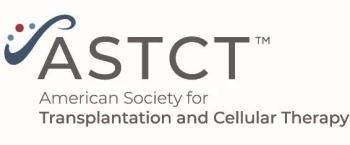
Investigational Treatment & Imaging Frequency Help Predict Sarcoma Outcome
Advanced imaging techniques could allow clinicians the ability to determine as early as 9 days into sarcoma treatment whether the therapy will be effective in a given patient, according to a new University of Michigan study.
Advanced imaging techniques could allow clinicians the ability to determine as early as 9 days into sarcoma treatment whether the therapy will be effective in a given patient, according to a new University of Michigan study.1 Current guidelines suggest CT or MRI scans generally every 6 weeks to 3 months; however, this new study changes that standard of care.
This study was published in the May 2015 edition of the Journal of Clinical Oncology.2
Researchers looked at 115 patients with metastatic, chemo-refractory Ewing sarcoma who were treated with R1507, a human monoclonal antibody directed at the type 1 insulin-like growth factor 1 receptor (IGF-1), as part of SARC011 study. IGF-1R has been implicated in the pathogenesis of the Ewing sarcoma family of tumors. Each patient had anatomic imaging with CT or MRI at baseline and at 6-week intervals. All patients also underwent FDG-PET at baseline and on day 9.
The investigators analyzed anatomic imaging results from 31 sarcoma centers using World Health Organization (WHO) criteria. An expert central radiology group performed an independent review and analysis on 76 patients. The researchers used log-rank analysis to define the optimal volume cut points for progression and response at 6-week imaging, which correlated with overall survival (OS). They compared this model to previously established criteria including WHO (both central and local), Response Evaluation Criteria in Solid Tumors (RECIST), and PET Response Criteria in Solid Tumors (PERCIST).
They found that a volume increase of 175% for prior lesions at 6 weeks was the optimal cutoff for decreased OS and disease progression. On the flipside, patients whose tumor volume decreased by at least 45% after 6 weeks had better overall survival.
Study author Vadim Koshkin, MD, who is with the University of Michigan Health System, Ann Arbor, Mich., said if a patient had a PET scan at day 9 that suggested the cancer was progressing despite the treatment. The treatment could be stopped and the patient could then switch to an alternative. Dr. Koshkin said this could spare the patient from additional weeks of ineffective therapy, and could also potentially be cost-saving.
Dr. Koshkin and his colleagues believe a new model using volumetric analysis with cutoffs different from those extrapolated from RECIST or WHO should be considered. Dr. Koshkin said this approach should be assessed in a prospective clinical trial.
References:
- University of Michigan Comprehensive Cancer Center. (2015).
U-M researchers highlight work on colorectal cancer, sarcoma, prostate cancer and oral chemotherapy . - Koshkin VS, Bolejack V, Schwartz LH, et al. (2015).
The who and what of imaging in sarcoma and correlation with survival. Journal of Clinical Oncology.
Newsletter
Stay up to date on recent advances in the multidisciplinary approach to cancer.



















































































